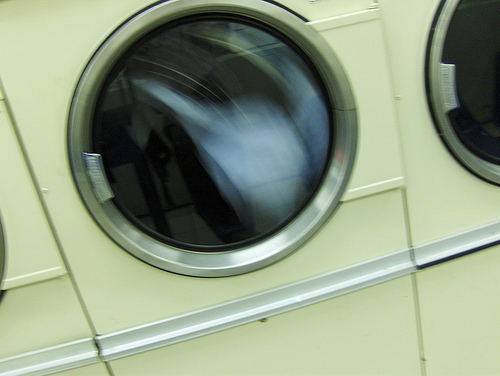
Dryers work by tumbling clothes and introducing heat while humid air is vented out an exhaust. Most of the lint produced in this process is captured in a lint trap, but small amounts pass through and can deposit in the dryer vent. Dryers are a highly utilized appliance and lint can quickly buildup over time.
As with just about every home appliance, dryers will function longer and more efficiently with the right preventative maintenance. The single most effective maintenance a homeowner can perform is routinely clearing away lint and obstructions. It’s a simple job but one that will ensure your dryer is safe and effective.

Clogged Dryer Vents
Dangers of Lint Buildup
Clogged vents will have a negative impact on how well your dryer performs. At a minimum, lint buildup will restrict air-flow causing the dryer to work harder for the same results. This in turn shortens the dryer lifespan. If your vent pipe is long or has lots of twists and turns, take extra precaution as lint will deposit faster.
If you think about it, lint is composed of small, dry fibers which can easily catch fire. Fires that start will spread quickly with catastrophic effects, and an alarming number of house fires are caused by blocked dryer vents. The U.S. Consumer Product Safety Commission (USCPSC) reported that in 1998 an estimated 15,600 house fires were linked to clothes dryers.
Dryers that utilize natural gas also exhaust carbon monoxide. If a dryer is malfunctioning, carbon monoxide can back up into your home, accumulating in lethal amounts.
Warning Signs
Here are some of the warning signs that indicate your dryer vent could use some attention:
- Dryer needs more time or extra cycles
- Clothes are not completely dry
- Dryer exterior is much hotter
- Poor air flow out of the vent during a cycle
How Often Should You Clean a Dryer Vent
Many sites suggest checking your dryer vent at least once a month and cleaning as necessary. Really, it depends on how much you use the dryer. If you have a large family and lots of laundry, you’ll need to clean the vent more often. I read one suggestion that you should perform maintenance every time you change the batteries in your smoke detector- twice a year.
Dryer Vent Monitors
There are devices available that will alert you of an obstructed dryer duct. Basically, you install a pressure sensor in a clean dryer duct and it monitors any change. As lint builds up, the pressure required to force air out of the vent increases tripping an alarm.

Cleaning Lint from the Dryer and Vent
Here are some steps to take to prevent fires and increase the efficiency of your clothes dryer:
- Clean the lint screen/filter before or after drying each load of clothes. If clothing is still damp at the end of a typical drying cycle or drying requires longer times than normal, this may be a sign that the lint screen or the exhaust duct is blocked.
- Clean the dryer vent and exhaust duct periodically. Check the outside dryer vent while the dryer is operating to make sure exhaust air is escaping. If it is not, the vent or the exhaust duct may be blocked. To remove a blockage in the exhaust path, it may be necessary to disconnect the exhaust duct from the dryer. Remember to reconnect the ducting to the dryer and outside vent before using the dryer again.
- Clean behind the dryer, where lint can build up. Have a qualified service person clean the interior of the dryer chassis periodically to minimize the amount of lint accumulation. Keep the area around the dryer clean and free of clutter.
- Replace plastic or foil, accordion-type ducting material with rigid or corrugated semi-rigid metal duct. Most manufacturers specify the use of a rigid or corrugated semi-rigid metal duct, which provides maximum airflow. The flexible plastic or foil type duct can more easily trap lint and is more susceptible to kinks or crushing, which can greatly reduce the airflow.
- Take special care when drying clothes that have been soiled with volatile chemicals such as gasoline, cooking oils, cleaning agents, or finishing oils and stains. If possible, wash the clothing more than once to minimize the amount of volatile chemicals on the clothes and, preferably, hang the clothes to dry. If using a dryer, use the lowest heat setting and a drying cycle that has a cool-down period at the end of the cycle. To prevent clothes from igniting after drying, do not leave the dried clothes in the dryer or piled in a laundry basket.
DIY / Professional Dryer Duct Cleaning
Some dryer maintenance cannot be completed by a homeowner and it’s important to get a qualified service technician involved. They will be able to asses the interior of the dryer and fully clean a dryer vent. If you’re looking for a professional to service a dryer vent or the dryer itself, it’s important to shop around. Gather at least three quotes and get everything in writing.
There are some very inexpensive, easy-to-use dryer vent cleaning kits available for homeowners. Gardus offers a 10-Piece dryer vent system that utilizes a drill driver to really scrub the ducts clean. It can reach up to 12′ and navigate turns.
What do you think? When was the last time you checked your dryer duct?
Excerpts used with permission from USCPSC website. Images courtesy of Monica Arellano-Ongpin and seishin17.







If the vent tubing isn’t too long and doesn’t make any hard bends, compressed air is a good way to clean it out without having to completely remove the entire vent tubing. Just remove from the dryer, insert blower nozzle from an air hose attached to a compressor, and blow. You could even rubber band or tape the blower nozzle such that it stays on, and snake the air hose down the dryer vent. Another option is a vacuum. Wet/dry vacuums have long hoses that can be snaked down the dryer vent to either suck or blow the lint out.
If you have a dryer vent within reach of the ground, ensure that your kids or someone else’s haven’t shoved objects into the exterior opening, either blocking the hole, or preventing the flapper from opening properly.
As a kid, I remember having a dryer vent fire in our home- scary moment, baking soda flying everywhere! I’ve recently seen some plastic tubing kits that connect to a vacuum cleaner to go down the lint screen opening, but to get the lint in the vent line, you almost have to take things apart. That Gardus device reference will be worth checking out.